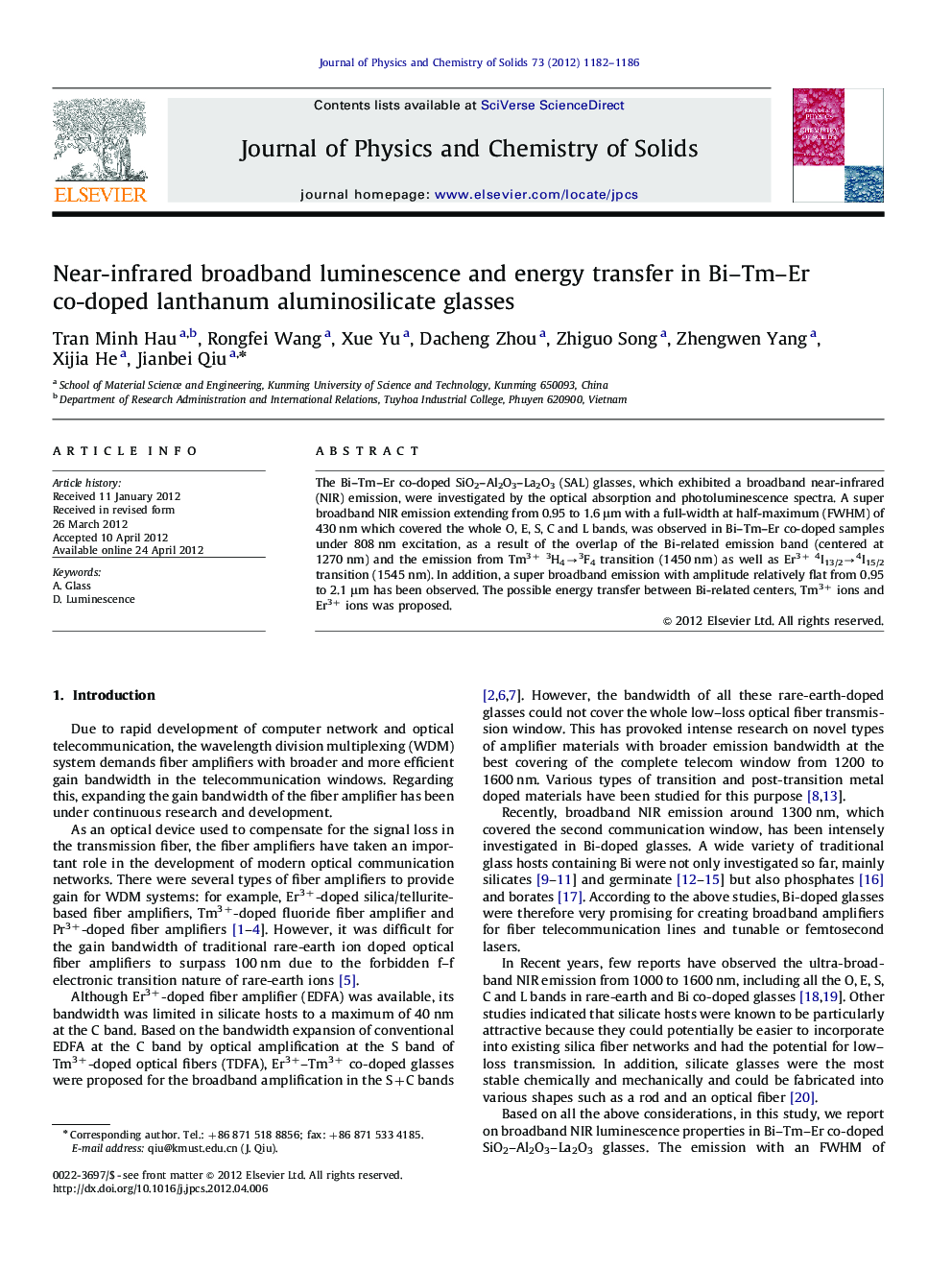| کد مقاله | کد نشریه | سال انتشار | مقاله انگلیسی | نسخه تمام متن |
|---|---|---|---|---|
| 1516093 | 1511557 | 2012 | 5 صفحه PDF | دانلود رایگان |

The Bi–Tm–Er co-doped SiO2–Al2O3–La2O3 (SAL) glasses, which exhibited a broadband near-infrared (NIR) emission, were investigated by the optical absorption and photoluminescence spectra. A super broadband NIR emission extending from 0.95 to 1.6 μm with a full-width at half-maximum (FWHM) of 430 nm which covered the whole O, E, S, C and L bands, was observed in Bi–Tm–Er co-doped samples under 808 nm excitation, as a result of the overlap of the Bi-related emission band (centered at 1270 nm) and the emission from Tm3+3H4→3F4 transition (1450 nm) as well as Er3+4I13/2→4I15/2 transition (1545 nm). In addition, a super broadband emission with amplitude relatively flat from 0.95 to 2.1 μm has been observed. The possible energy transfer between Bi-related centers, Tm3+ ions and Er3+ ions was proposed.
► Bi/Tm/Er co-doped lanthanum aluminosilicate glasses have been developed.
► Energy transfer was analyzed when pumped by conventional 800 nm LD.
► The broadband near-infrared emission from 950 to 2100 nm was observed.
► This material provides potential applications in the broadband optical amplifiers.
Journal: Journal of Physics and Chemistry of Solids - Volume 73, Issue 9, September 2012, Pages 1182–1186